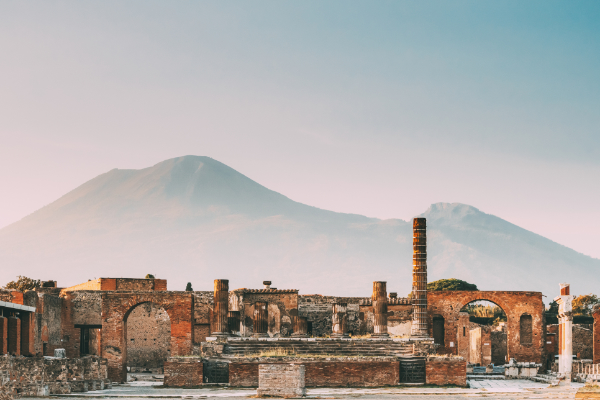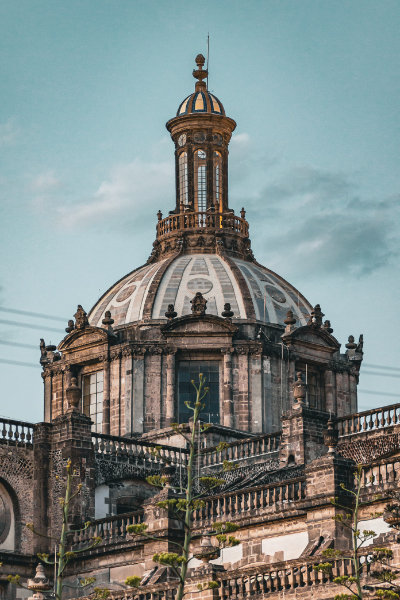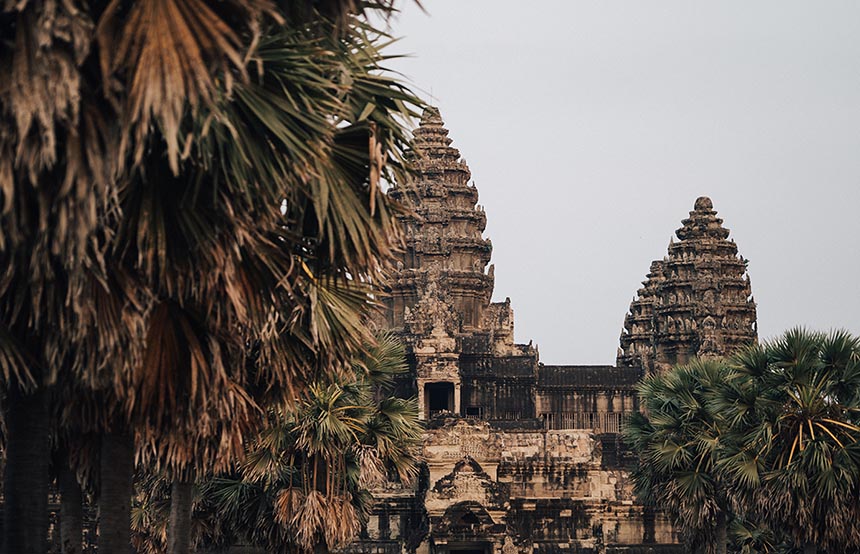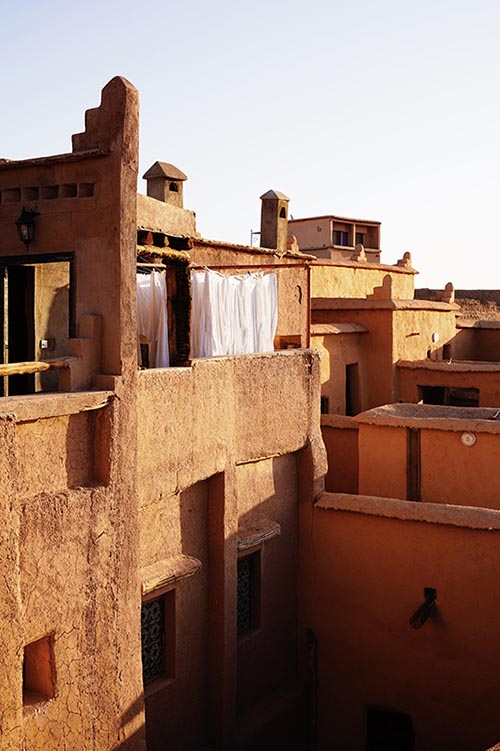There’s a reason that The Rest is History has become an international podcast phenomenon: it turns out that huge numbers of people are closet historians. Hats off to presenters Tom Holland and Dominic Sandbrook for allowing amateur antiquarians to say loud and proud: ‘I love history!’. That said, it’s one thing listening to, or reading about, history; but quite another to appreciate the past by standing in the very spot where extraordinary, epoch-changing events happened. So, for the ultimate historical experiences, here are our suggestions for the best places to visit for history buffs…
- Pompeii & Herculaneum, Italy
- Mexico City, Mexico
- Luxor, Egypt
- Athens, Greece
- Angkor Wat, Cambodia
- Fez, Morocco
- Great Zimbabwe Ruins, Zimbabwe
- Xi’an, China
1.
Pompeii & Herculaneum, Italy
When Mount Vesuvius blew her top in 79 AD, smothering the towns of Pompeii and Herculaneum in ash many yards deep, it was unfortunate for the poor inhabitants of those thriving towns, but an absolute godsend for future generations of historians. The perfectly preserved streets and buildings of these two towns at the peak of the Roman Empire’s powers have been painstakingly uncovered over decades, but there are still an astonishing 55 acres of Pompeii lying untouched. Who knows what we’ll find over the coming years? Of the parts of Pompeii that have seen the light of day, the highlights include cobbled streets where the stone has been worn down by years of passing wagons, and an inn complete with bawdy graffiti on the walls. A visit here is an extraordinary (if busy) experience.
Feeling inspired? Check out an example itinerary here: From Palazzos to Pompeii: An Authentic Long Weekend in Naples

2.
Mexico City, Mexico
Modern Mexico City is a marvel, and a must-visit on any trip to Mexico, but beyond the sensational street food and excellent art and murals of Frida Kahlo and Diego Rivera respectively (history in and of themselves, of course) there is history right under your feet. The vast Zocalo, the main square, was once the centre of the island Aztec capital of Tenochtitlan, where the extraordinary meeting of Spanish conquistador Hernan Cortes and the Aztec emperor Moctezuma II – arguably one of the most significant in history – took place. Months later Moctezuma was dead, and the inexorable colonisation of the Americas by Europeans took another fatal step.
Feeling inspired? Check out an example itinerary here: Pre-Columbian Ruins in Mexico

3.
Luxor, Egypt
Rome might give Luxor – or ancient Thebes – a run for its money, but I’d argue there is no single place on the planet with more historical significance and more to see. On the east bank of the Nile, next to the modern city, are two magnificent sites: the eponymous Luxor Temple and the sprawling Karnak complex, where the 134 columns of the temple of Amun-Ra stand more than 60ft high, their massive shafts like centuries-old oak trees, and entirely covered with hieroglyphics. Across the Nile, the vast temple dedicated to Hatshepsut is testament to one of Ancient Egypt’s most powerful women, and the Valleys of the Kings, Queens and Nobles contain mind-bogglingly intricate tombs. Far less visited but of historical interest nonetheless, Howard Carter’s house, where he lived for the duration of the Tutankhamun dig, has an interesting exhibit with some of the original contents still housed there. Explore all of this and more from the comfort of our glorious boat, the Steam Ship Sudan, herself a part of history as the last surviving steamer from the Thomas Cook fleet.
Feeling inspired? Check out an example itinerary here: On the River Nile: Luxury Hotels & a Cruise on the Steam Ship Sudan

4.
Athens, Greece
We keep mentioning Rome, and the city is indeed special, but in the interests of only having one historical setting per country, we plumped for Pompeii. Instead, we come to Athens, because from a historical perspective, so much of Roman culture was inspired by (and, occasionally, shamelessly ripped off from) the Ancient Greeks, so Athens is essentially the source material. On the subject of Athens (or Athina as the Greeks call their capital), she was co-opted like all the other gods and goddesses to become Roman Minerva, down to her owl and olive tree motifs. Elsewhere in this brilliant city you can stand in the Lyceum, where Plato and Socrates helped lay the foundations of western philosophy, and wander around the astonishing treasures of the Acropolis, from the 2,500 year-old Parthenon commissioned by Pericles to the Erechtheion and Temple of Athena Nike.
Feeling inspired? Check out an example itinerary here: A Big Greekend in Athens

Image by Faustine Poidevin
5.
Angkor Wat, Cambodia
From around 800 AD to 1430 AD the vast Khmer Empire encompassed most of what is now Indochina. At its centre? A huge (and we mean huge, like spread over an area measuring 390 square miles) city and religious centre that was at one point the biggest city in the world. Today it can feel every bit as busy as it was back in the day, but that’s where we come in, because Original Travel has studied the usual comings and goings of busloads of tourists, and can arrange any visit so that you see the popular temples off peak times, and then spend time in less well-known sites. Suffice to say, wherever you are on the site, in the hands of an expert guide (which you will be) the history of this magnificent place is awe-inspiring. Best of all, in our humble opinion, are the temples that have been left as they were first rediscovered, often with sinuous banyan trees curled around and through doorways.
Feeling inspired? Check out an example itinerary here: Angkor for Archaeologists - The Best of Angkor's Remote Temples

Image by Samantha Faivre
6.
Fez, Morocco
If you want a sense of what life was like in the Middle Ages, then a visit to Fez is like time travel. The alleyways of the medina (old town) are almost unchanged in a millennium, with many of the same sounds, smells and sites still ever-present. Experience what it’s like to be borne along by a bustling crowd in the narrow streets; smell the unmistakable (and pretty unpleasant) pong of the tanneries, where the technique of dying leather is also unchanged in centuries; and hear the squawks of hawkers in the city’s labyrinthine souqs – Fez is quite simply a living, breathing historical experience. For more conventional history, pay a visit to the University of al-Kairaouine, the world’s oldest university (founded in 859 AD) and one of the crucibles of Islamic scholarship in medieval times.
Feeling inspired? Check out an example itinerary here: Ultimate Morocco

Image by Birgit Sfat
7.
Great Zimbabwe Ruins, Zimbabwe
Zimbabwe is about more than safari. We can arrange for you to explore southern Africa’s largest medieval capital, Great Zimbabwe, with an emerging archaeological scholar from Great Zimbabwe University. You can wander around the largest ancient dry stone wall city south of the Sahara, and visit the Royal Palace, the Hill Complex and the Great Enclosure. According to archaeological and Portuguese records, Great Zimbabwe flourished from 1100 AD to 1450 AD as the capital of a medieval Shona/Karanga kingdom that extended all the way to the Indian Ocean coast in latter-day Mozambique. You’ll hear about the city’s intercontinental trade and interaction, especially with the East, as evidenced by the discovery of foreign goods such as Chinese porcelain. That said, several mysteries remain, especially in relation to the original builders of the site. Many historians were once convinced that Great Zimbabwe was the temple of King Solomon, based on the architectural design, which they believed resembled the biblical city of Ophir.
Feeling inspired? Check out some example itineraries here: Our Zimbabwe Holidays

8.
Xi’an, China
Xi’an is the eastern end of the fabled Silk Road, that most romantic of historical phenomena that saw the exchange of goods and ideas between Europe and the Orient. As such it already holds a special place in historian’s hearts as a revered location, but then there’s the extraordinary legacy of Qui Shi Huang, China’s first emperor – the Terracotta Army. The story of how the army, and the tomb they were protecting, were discovered is the stuff of legend. In 1974 a group of farmers digging a well instead found a pit full of full-sized terracotta model soldiers, each with individual facial features. Archaeologists later unearthed a total of 8,000 troops, chariots and more in what is often considered the greatest archaeological find of all time. Intriguingly, the tomb of the Emperor himself remains unopened.
Feeling inspired? Check out an example itinerary here: China in Style: Experience History, Culture and Nature in Total Luxury

Written by Tom Barber | Header image by Faustine Poidevin













